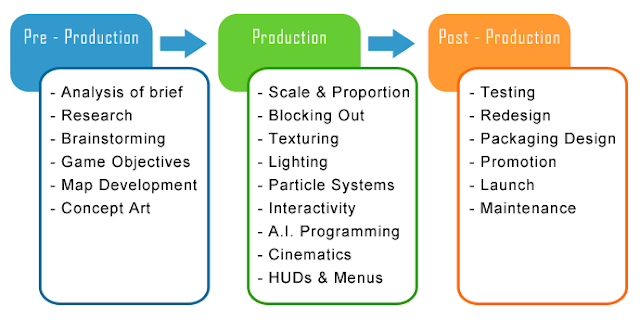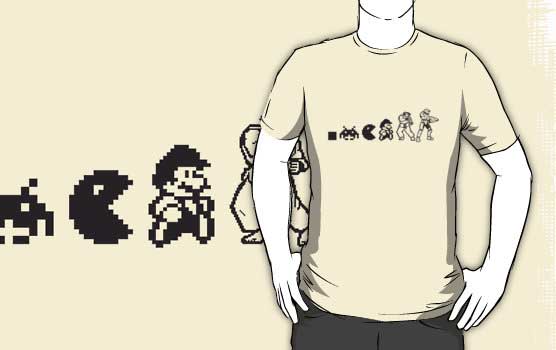The Positives of Gaming Infographic
 |
| The Positives of Gaming - Click to enlarge |
Lets start off on a positive note! This great infographic highlights all the good things about gaming, the positive effects it has on gamers and it even finds space to debunk a few myths about gaming too. That's an awful lot of info in one image. If you would like to learn more about gaming or games design you can read more >>>
Game Design Team Infographic
 |
| The Games Design Team - Click to enlarge |
Game Genres Infographic
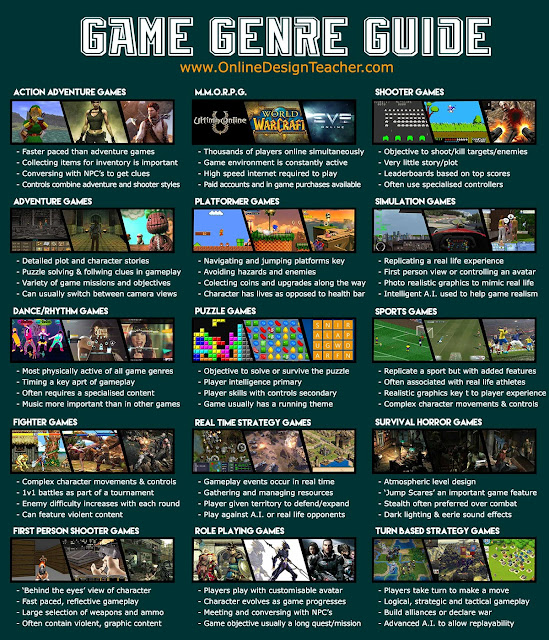 |
| Computer Game Genres - Click to enlarge |
Video game genres are used to organize video games based on their game-play interaction rather than visual or narrative differences. For example, a shooter game is still a shooter game, regardless of whether it takes place in a fantasy world or in outer space. Most computer games fall within a particular category or genre. Some bridge different gaming styles and, thus, could appear under more than one genre simultaneously. This infographic provides a list of all the main game genres with the features of each genre explained in brief. Read More >>
Want to work in the gaming industry but nor sure where to start or what to do? Then this is the infographic for you. Go from Start and answer the questions as you go to guide you to the ideal gaming career for you. If you would like to learn more about careers in the gaming industry then you can read more >>>
Recently the global video game market was said to be valued at approx US$70 billion, but the modern video game industry had a very humble beginning. This short but concise infographic will guide you through the main events in the evolution of gaming. If you would like a more detailed history then read more >>>
Video games are unique in that they provide an interactive experience that differentiates them from watching movies or listening to music. Games require the active participation of the user and you can't do much else while playing. This gaming infographic charts some of the players' interactions when playing Mass Effect 3. Once you've spent enough time playing a particular game, you should have enough experience to write a compelling review of it. Read More >>>
This is a big infographic! But then again mobile gaming is now very, very big business and the mobile gaming industry is still growing year on year. If you would like to create your own mobile or 2D game then you can start learning for free right now. Read More >>>
The computer games design process is based on the general design process but has a process which is solely focused around the area of computer games. The headings differ from those in the general design process but they are effectively the same steps just broken down further and re-titled for a particular task. The overall process takes on the form of 3 major stages, as shown in the infographic above, with each containing a subset of more specific stages. The stages are called pre-production, production and post-production. As the names suggest the processes central objective is the creation of the game. Read More >>>
Gaming Career Infographic
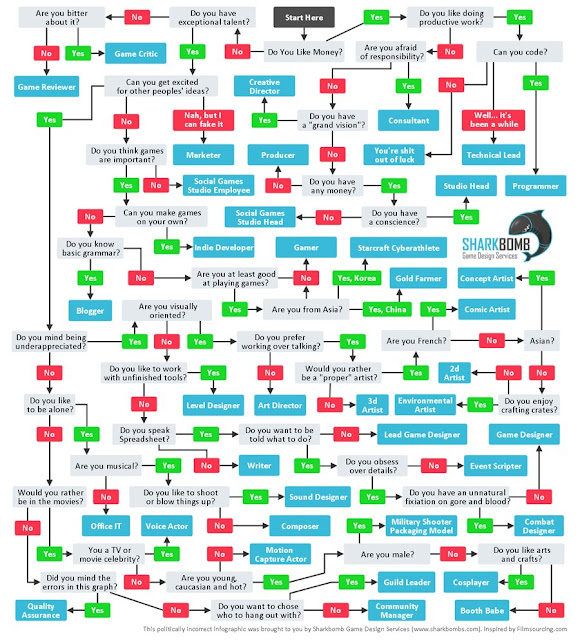 |
| Choosing a Career in Gaming - Click to enlarge |
Want to work in the gaming industry but nor sure where to start or what to do? Then this is the infographic for you. Go from Start and answer the questions as you go to guide you to the ideal gaming career for you. If you would like to learn more about careers in the gaming industry then you can read more >>>
History of Gaming Infographic
 |
| A quick history of video games - Click to enlarge |
Game Review Infographic
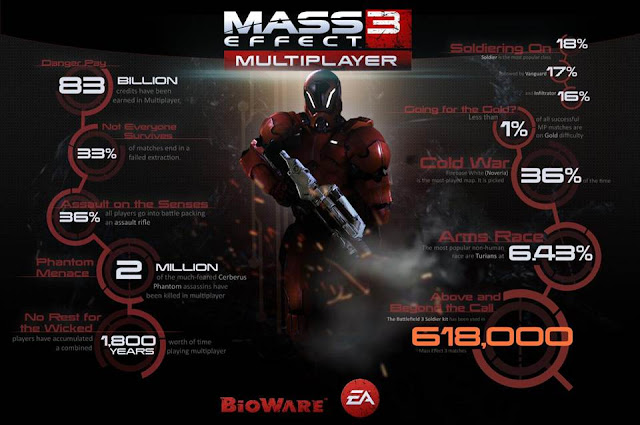 |
| Mass Effect 3 Review Infographic - Click to enlarge |
Culture of Gaming Infographic
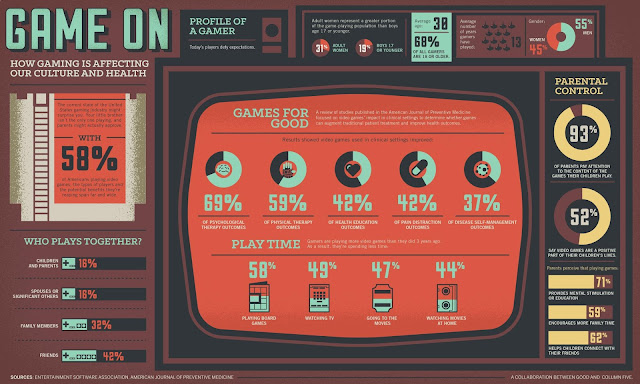 |
| How gaming is effecting our health and culture - Click to enlarge |
If there’s one skill that we all want to keep improving, it’s decision making. No matter what you end up doing for a living, whether it be a secular job, military or stay-at-home, the ability to evaluate the advantages and disadvantages of several choices is important. Gamers can breathe a sigh of relief; new studies have only served to confirm that playing video games can help us make better decisions, faster and this infographic outlines the findings. Read More >>>
The Rise of Mobile Games Infographic
 |
| Click to enlarge |
This is a big infographic! But then again mobile gaming is now very, very big business and the mobile gaming industry is still growing year on year. If you would like to create your own mobile or 2D game then you can start learning for free right now. Read More >>>


